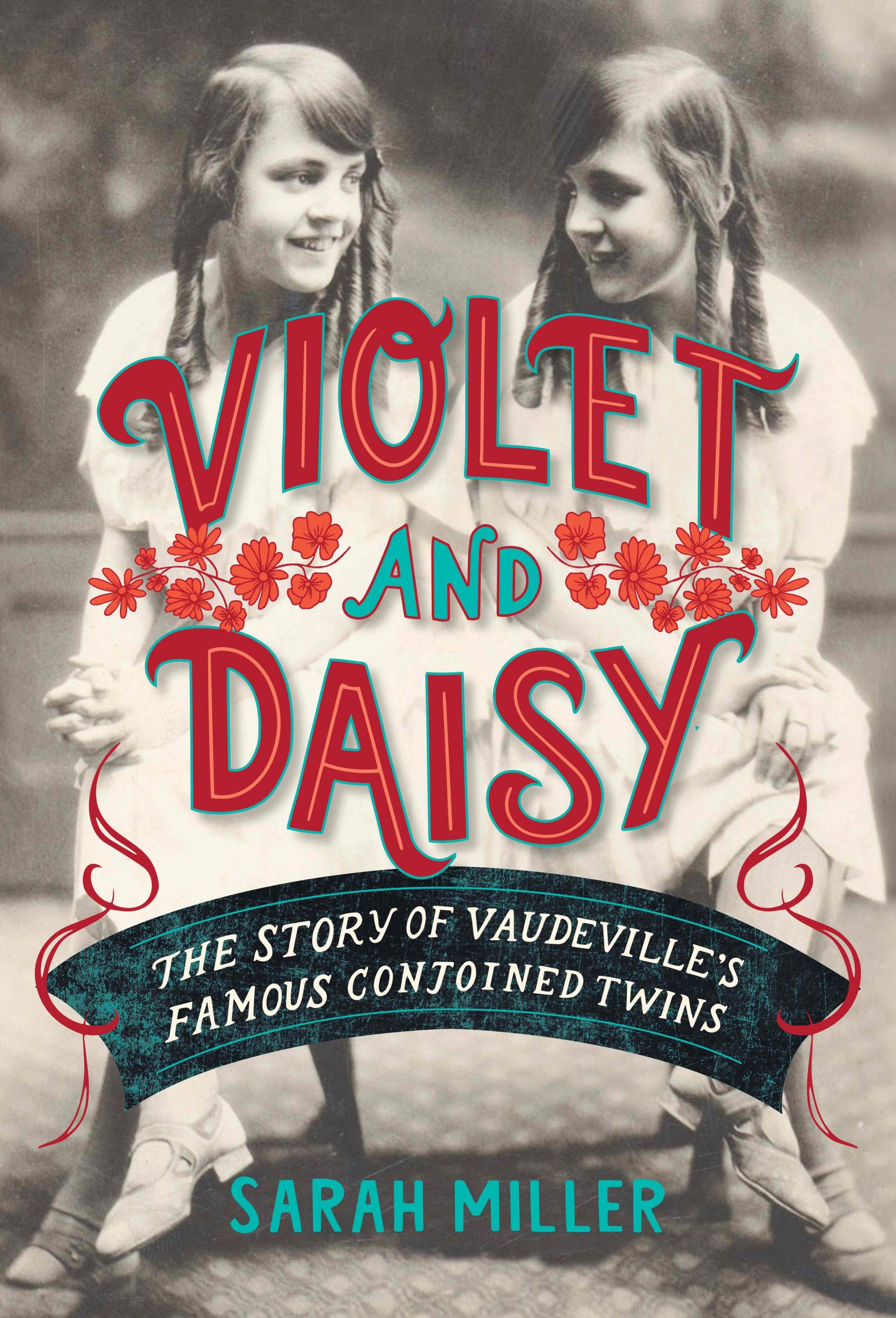by Sarah Miller
What a pair!
You and your friend, you’re like two peas in a pod. Yin and yang. Where one is, so’s the other. You’ve been pals since forever and you do everything in tandem. Two sides of a coin. Like bread and butter. As in the new book “Violet and Daisy” by Sarah Miller, you’re almost literally joined at the hip.
Kate Skinner had plenty of reason to scream.
She’d been in labor for hours, and the pain was excruciating. The midwife thought the baby was stuck, until she realized there were two babies. And then, with “a great deal of unusual twisting and turning,” twins were born and Kate screamed again.
Her newborn daughters were attached at the base of their little spines, an issue that didn’t affect their overall health or well-being: the girls shared a rectum, tailbone, and anus, along with some muscles and skin but they were normal children otherwise. Kate didn’t know that, though, and she refused to care for her babies, and so the midwife, Mary Hilton, took them in and gave them her surname.
Outwardly, Hilton was a kindly woman who loved the girls named Violet and Daisy, but the truth, says Miller, was that she abused them and displayed them for money. Later, Hilton’s son-in-law and daughter did the same, bouncing the growing girls from continent and manager to the next place and sideshow, ultimately landing in America. Through the years, the Hilton sisters made their foster family and various managers they hired very wealthy but in a then-scandalous, nationally-followed court case they launched when they were young adults, they learned that the money was largely gone…
To twenty-first-century eyes, what happens in “Violet and Daisy” may seem sadly, tabloidishly familiar. But keep reading: there’s more to this true story, and it’s quite compelling.
Author Sarah Miller captures reader’s interests by setting the stage at the beginning of her book, explaining why the Hilton sisters’ mother was so aghast at their birth, and showing the ease that Mary Hilton enjoyed when taking advantage of the entire situation for years. To know how and why both things occurred is a lesson in cultural history.
Miller’s account of the court case comes roughly in the middle of this book, and it’s likewise beneficial if you can see the wide picture. America wasn’t very enlightened throughout most of Violet’s and Daisy’s lifetimes, as evidenced by the details of their lives and the touchy legalities of the normal existence they craved. Medicine was still, by modern standards, rather crude. And yet, the court judgement and the Hiltons’ subsequently successful career show a nation hurdling through many advances that could only portend good.
But not entirely: how Daisy’s and Violet’s lives take a turn, and how they end, is the perfectly tragic period at the end of a heartbreaking sentence.
You might find this book in the YA section but don’t let that deter you: it’s one you’ll want to find and savor. “Violet and Daisy” and a bookmark. What a pair!


